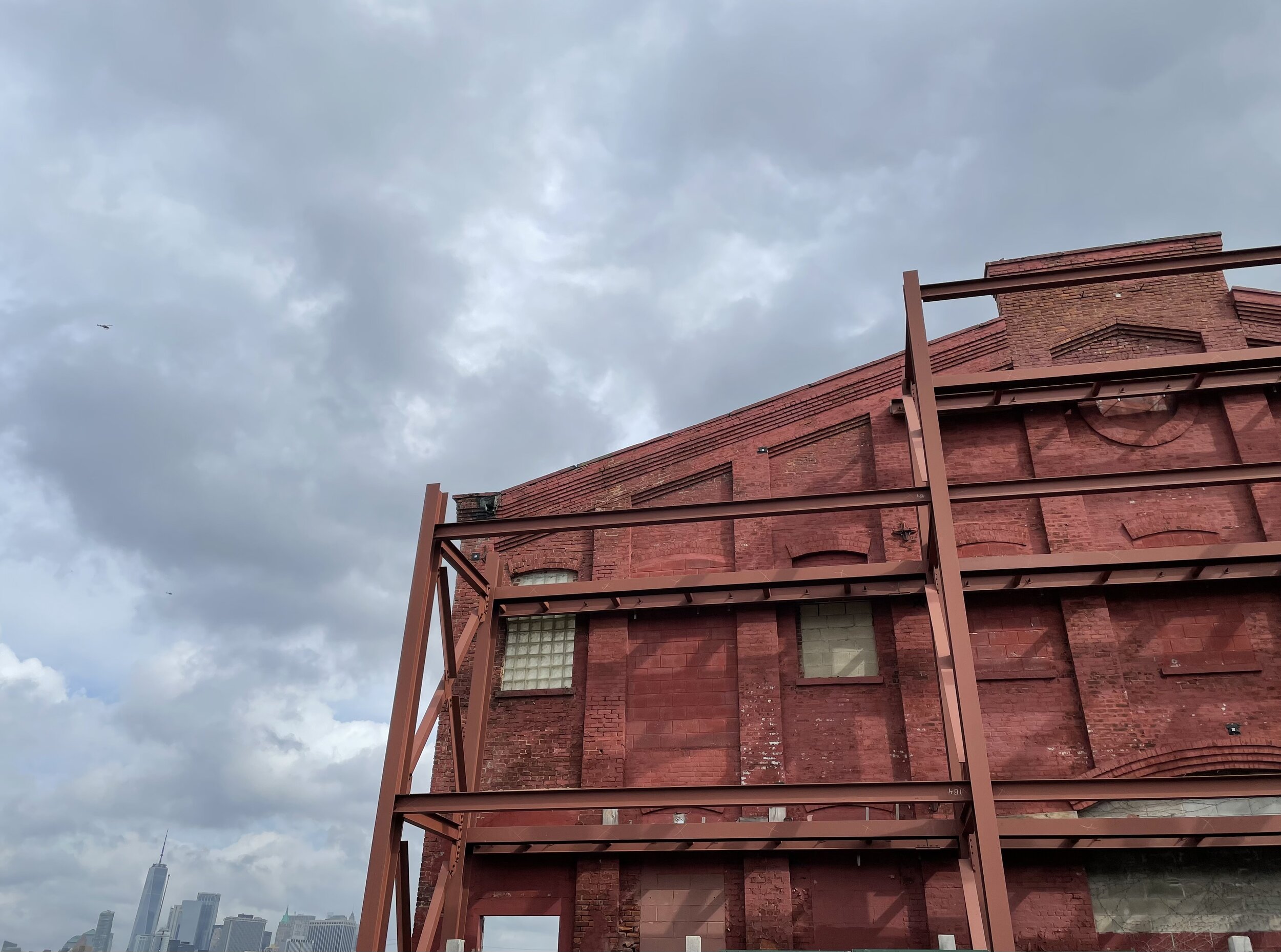
Our neighborhood
About Red Hook, Brooklyn
Ihepetonga, as it was known to the native Lenape people, was renamed Roode Hoek by the Dutch colonists of New Amsterdam in 1636. The name partially refers to the red clay soil of the tidal land mass, as well as the shape of the land. When the English took control of the area, the name was Anglicized to “Red Hook.” As the community of Red Hook expanded, shipyards and dry docks were constructed, and farmland was joined and then overtaken by mills that depended on the nearby Atlantic and Erie Basins. After the Civil War, Red Hook’s busy industrial port drew thousands of Irish, German, and Italian immigrant laborers and their families to the neighborhood. By the end of the 19th century Red Hook was for a time the busiest freight port in the world, serving as the center of the city’s lucrative cotton trade. But by the start of the 20th century, Red Hook was in economic decline as the shipping industry moved most of its business to the Port of Newark.
In 1936, Robert Moses, using the destructive vehicle of urban renewal, a policy that had no regard for people and communities, constructed the Red Hook Recreation Center on the eastern end of the neighborhood. This project was then followed by the construction of the Red Hook Houses, the first federally funded public housing complexes, which were built to accommodate dockworkers and their families. In 1946, the Gowanus Expressway was built on the north end of the neighborhood. Four years later, the Brooklyn Battery Tunnel was also constructed, effectively cutting Red Hook in half from the rest of the community north of it, and complicating transportation access for neighborhood residents.
In addition to economic challenges, the community has experienced significant air and environmental pollution (a legacy of its industrial past) and the dramatic effects of climate change. Red Hook is classified as “high risk” or “highest risk” of flooding, per FEMA, which was evidenced during Superstorm Sandy in 2012 when floodwaters overwhelmed the neighborhood streets, houses, and the Red Hook Houses and Recreation Center. Ongoing lead abatement in the playing fields and mitigation efforts to address flooding in the community continue.
Today, Red Hook’s economic outlook is rising again, as new businesses, artists, and artisans have moved into the area. But more opportunities are still needed. Residents continue to strongly advocate for better housing, cleaner and safer spaces, nicer parks and play areas, and access to more reliable public transportation and services.
Red Hook Conservancy serves our community by safeguarding the neighborhood’s natural assets, mitigating the impact of our environmental challenges, and educating our fellow citizens about the treasures we have and the problems we face. Through it all, our neighbors have held onto their strong sense of community, which has enabled them to survive and thrive through the toughest periods of their history.
Red Hook is part of Brooklyn’s Community District 6 and represented by the New York City Council's 38th District. Famous residents have included basketball player Carmelo Anthony, actress Michelle Williams, and Al Capone.
Learn more about Red Hook’s history here.
The Red Hook Grain Terminal is an abandoned grain elevator and the tallest structure in Red Hook. Built in 1922 to serve the New York State Canal System, the 12-story structure was built to store grain before being decommissioned in 1965 by its owner the Port Authority of New York and New Jersey as a result of declining canal use. Learn more about this neighborhood landmark here.
About the Red Hook Recreation Center
Originally known as the Red Hook Play Center, the Sol Goldman Recreation Center and Pool (or more commonly referred to as the Red Hook Recreation Center), was first opened in 1936 and was constructed with funding provided by the Works Progress Administration (WPA), one of the agencies created during the Great Depression. Designed by Joseph L. Hautman, the Center is set on a landfill site located on Brooklyn’s waterfront and stood as a major accomplishment in the Parks Department’s plan to transform portions of the industrial waterfront into recreational areas. When the Red Hook Play Center opened in August 1936 it was the eleventh and last WPA pool to open in New York City and the fourth to open in Brooklyn. Over the years, the Center has served a growing and diverse community in and around Red Hook.
Learn more about the Center here.

